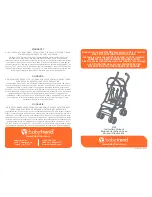
Data Manipulation Instructions
Chapter 6
63
Figure 6.3
Get and Put Instructions
||
11
( PUT )
238
111 040
| G |
238
130
If the word addressed by a Get instruction already contains data, the lower
12 bits of the data are displayed automatically after the word address is
entered. Entry of new data, such as a new BCD value, writes over the data
previously stored in the addressed word.
Although each data table word can store data, such as one BCD value, the
word address can be assigned to more than one Get instruction in the same
program. This allows the program to perform several different functions
with the same data.
The Get instruction is not a condition that determines rung logic continuity.
When the processor is in the run, test or run/prog mode, the Get instruction
is always intensified regardless of rung logic continuity. This does not
mean that data transfer will occur. Data transfer occurs only when the rung
is true.
The Get instruction can be programmed either at the beginning of a
rung or with one or more condition instructions preceding it. Condition
instructions, however, should not be programmed after a Get instruction.
When one or more condition instructions precede the Get instruction,
they determine whether the rung is true or false. Parallel branches of Get
instructions cannot be programmed unless they are paired with a Les or
Equ instruction.
The Put instruction is an output instruction. It receives 16 bits of data from
the immediately preceding Get instruction and stores the data at its address
as shown in Figure 6.3. A Put instruction can have the same address as
other instructions in the program. For example, a Put instruction having the
same address as a counter preset will change the counter preset value to
that transferred from the Get instruction (Figure 6.4).
6.1.2
Put Instruction
Artisan Technology Group - Quality Instrumentation ... Guaranteed | (888) 88-SOURCE | www.artisantg.com
















































